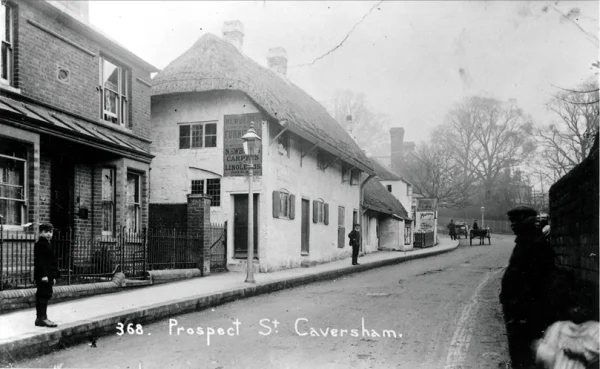In January I did something I’d been intending to do for some years: I booked an appointment at the Berkshire Record Office to look at the draft census returns for Caversham, 1821. These should really have been destroyed, but have somehow survived among the other records from St. Peter’s Church.
The idea of conducting a census every ten years met with a great deal of opposition nationally at the beginning of the nineteenth century. People didn’t like the idea of their personal details being written down for others to see, so the government of the day agreed that once the figures had been collected, the paperwork would be destroyed, but in this instance, Caversham 1821, it wasn’t.
The amount of information collected is very slight in comparison with what was called for later. Information on the location of each house is often lacking, but for each building, there is the name of the head of the household (or households), the number of people in each household, whether they were male or female, their ages, and whether they were employed in agriculture, trade, or neither agriculture nor trade.
In the first census of 1801, the population of Caversham was 1069. In 1821 it was a village of 1317, and in 2021 it was around 32,000.
One of the surprising things about the 1821 draft is the number of families who shared houses. You find entries like “Austin and Simonds – 8 people” and “Baker and Freebody – 14 people.” The profligate Col. Marsack of Caversham Park had a household of 21, but would soon have to flee the country to avoid his creditors.

I took a closer look at the area called Little End – now the top end of Prospect Street, near the former Prince of Wales inn – now called The Last Crumb. The 22 cottages were home to 236 people. Turning to the 1841 census return, when people’s names were recorded but kept secret for 100 years, Little End had 28 cottages with 124 residents. There had obviously been great changes in the intervening years, and other changes would result from a fire in 1907, when the roofs of the thatched cottages caught fire. They were largely destroyed, because the Reading Corporation Fire Brigade did not attend fires in Caversham.
The 1821 draft census is distinctly lacking in geographical information. The four enumerators would have known where everyone lived, and in any case, the information wasn’t required by the government. The only places mentioned are Caversham Lower Street (i.e. the area around Caversham Mill), Little West Field, St. Peter’s Hill, and Little End. Most people would have lived along Caversham Street, which seems to have been Bridge Street and Church Street.
Another thing to remember about the Caversham census figures is that until 1921, Caversham Parish was a much larger area than the built-up part which became part of Reading in 1911. It included Chalkhouse Green, Tokers Green, an area called Caversham Common, and two more “Ends” as well as Little End – Cane End and Kidmore End.
This article was originally published in the Caversham Bridge Newspaper
